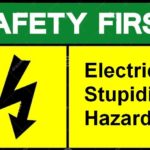Leland Teschler • Executive Editor
For some cheap thrills, try Googling the words “battery breakthrough.” You’ll be presented with page after page of articles breathlessly chronicling one research result after another in energy storage. But you might wonder why, with so many earth-shattering developments, electric vehicles can’t travel 1,000 miles before needing a recharge.
The reason: It doesn’t take much to be a breakthrough in batteries these days, at least not in the eyes  of journalists. We did a quick review of the top “battery breakthrough” search results to figure out why EVs in our neighborhood are forced to charge up every night. What we found was that a lot of the work reported in excited tones is over hyped. The typical “battery breakthrough” isn’t a battery at all. It more likely takes the form of goop in a flask sitting on a lab bench somewhere.
of journalists. We did a quick review of the top “battery breakthrough” search results to figure out why EVs in our neighborhood are forced to charge up every night. What we found was that a lot of the work reported in excited tones is over hyped. The typical “battery breakthrough” isn’t a battery at all. It more likely takes the form of goop in a flask sitting on a lab bench somewhere.
That said, researchers quoted in write-ups of their work tend to be more measured and circumspect about what they’ve achieved. Unlike the gushing of reporters, individual researchers are more likely to characterize their accomplishments as building blocks or promising strides on what’s likely to be a long road to commercialization.
For example, consider the “breakthrough” at Nanotech Energy, a startup that hopes to produce a battery charging “18 times faster than anything currently on the market” within the year. Perhaps, but all it has made so far are graphene inks.
Then there are the electrolytes coming out of the Lawrence Berkeley National Lab that suppress dendrite growth on battery anodes before it can cause the battery to fail. The electrolyte is flexible enough to be a laminate between the anode and the battery separator on rolls of lithium foils–someday. But that’s all down the road a bit.
Also in this category is Sila Nanotechnologies. It has come up with a “nanocomposite” of silicon and other materials to replace the graphite in electrodes. The company says its product will boost battery capacities by 20 to 40%. But Sila doesn’t actually make batteries. It hopes to get its technology into the hands of companies that do, in fact, make batteries in the next year.
A similar development comes from scientists at Washington State University. Researchers there were able to prevent dendrites from forming on electrodes—and eventually shorting out the battery—by adding a few key chemicals to the cathode and electrolyte to form a protective layer on the surface of a lithium-metal anode. The team figures the process can be integrated into existing manufacturing procedures. But no word yet of any battery maker actually doing so.
Reading between the lines, many advances touted as breakthroughs sound like maybe-somebody-can-use-this developments. A minority involve real batteries. One of the few in this category is QuantumScape. The company has released test data on its solid-electrolyte cells indicating batteries based on them could charge 80% in just 15 minutes. But the QuantumScape battery cells are just one layer of a much larger cell structure that will make up real batteries.
It remains to be seen whether QuantumScape can scale up and produce entire battery packs at industrial scale. If things go well, Volkswagen says it hopes to use the batteries in its 2024 or 2025 vehicles. So though QuantumScape is well beyond the goop-in-a-flask stage, its technology is still about five years away from commercialization.
That time frame is something to keep in mind the next time you see a headline announcing “breakthrough” battery chemistry lab work.







My local battery supplier and myself was conned by the so called breakthrough in Lead Crystal Batteries. The company that made these batteries claimed they would last ten years, had a similar charge and discharge characteristics to conventional lead acid batteries.
It was also claimed they could be discharged down to almost zero volts. Note these batteries are not for portable use. I paid $5000 Aus for 8 x 6volt 200 amp hours after 2 years I load tested them and they only had half their capacity. I then tried to find out why and I noticed it was now hard to contact the company, I was told that I had to charge them at 2/3C which is around 120 amps. This was a total shock. My solar system at most inputs 2000W which is 50 amps max at 48V. This means for me is useless, they were hyped for Solar storage well I will keep using them but their storage capacity is pathetic.
I have noticed we are being sold cheap lithium phosphate ion batteries in Australia and it seems impossible to check useful technical manuals on these batteries.
Battery technology is still very disappointing even though we keep hearing about breakthrough after breakthrough. I have lost trust in many of the claims that companies make.
It has been my feeling as well that we never hear any more about breakthroughs after the initial announcement. And we never hear anything about what prevented the success. That would be very interesting indeed. The product that I was involved in the developing was simply canceled because the profit was too far down the road, and it was a product that the auto companies really wanted. It was a sensor that would detect a crash much faster than the accelerometer do es in present systems. The problem that we saw as big was the sensing element, which was difficult to produce with uniform sensitivity and adequate production yield. Probably a different approach could produce it, but that was not what the leaders wanted and so no alternative approaches were investigated. A sensing element that was good and cheap would be far outside the current patent and so some other company could make a product that saved lots of lives. And make money as well.